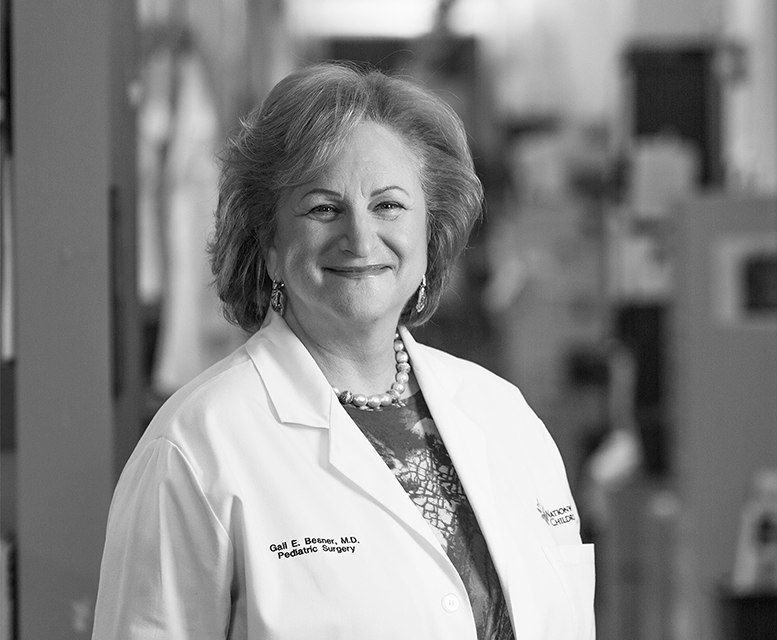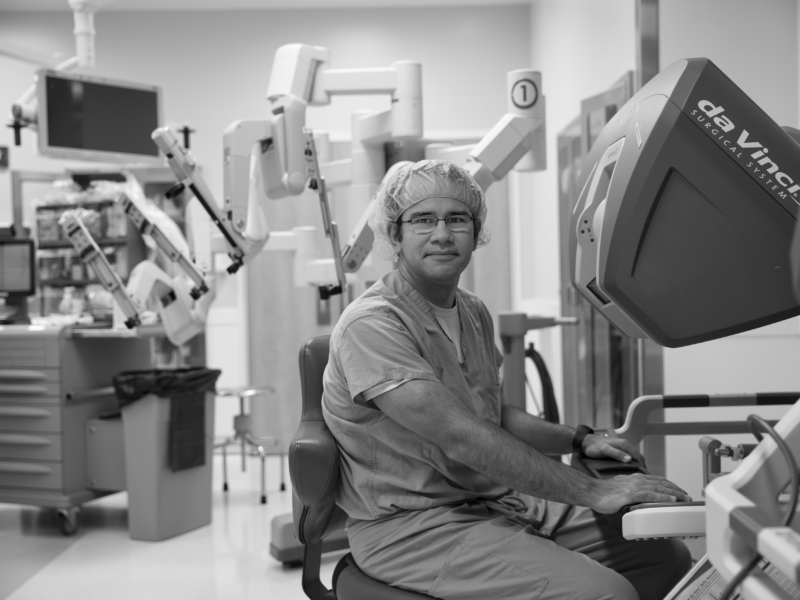Probiotic Treatment Promotes Neurodevelopment After Experimental Necrotizing Enterocolitis
Probiotic Treatment Promotes Neurodevelopment After Experimental Necrotizing Enterocolitis https://pediatricsnationwide.org/wp-content/uploads/2021/02/012319ds0314-Besner-for-web.jpg 777 640 Lauren Dembeck Lauren Dembeck https://pediatricsnationwide.org/wp-content/uploads/2021/03/Dembeck_headshot.gif- September 10, 2021
- Lauren Dembeck

A single dose of a novel live probiotic therapeutic protects the rodent brain during early development and the effects persist into adolescence.
Researchers at Nationwide Children’s Hospital have demonstrated that when given in a biofilm state, probiotic Lactobacillus reuteri prevents the detrimental neurodevelopmental sequalae of experimental necrotizing enterocolitis (NEC).1
The findings, published in Brain, Behavior & Immunity – Health, have significant implications for bench-to-bedside translation of this innovative microsphere-based probiotic delivery system and its potential to reduce the harmful effects of clinical NEC in neonates.
“In the last seven decades, despite an incredible amount of progress in treating most pediatric diseases, relatively little progress has been made in the ability to prevent babies with necrotizing enterocolitis from dying or, in those that survive, from developing severe consequences of the disease,” says Gail Besner, MD, chief of Pediatric Surgery at Nationwide Children’s and a principal investigator in the Center for Perinatal Research at the Abigail Wexner Research Institute at Nationwide Children’s.
The study emerged from a fruitful collaboration between the laboratories of Dr. Besner and two principal investigators in the research institute’s Center for Microbial Pathogenesis, Steven Goodman, PhD, and Michael Bailey, PhD. This multidisciplinary team previously demonstrated that a single dose of L. reuteri delivered in its biofilm state protects the intestines from injury in an animal model of NEC, significantly reducing NEC incidence and severity.2,3
“In all clinical trials of probiotics to protect babies from NEC to date, the probiotics have been administered in their free-living state. However, bacteria thrive and are much more effective in a biofilm state,” says Dr. Besner. “In our novel delivery system, we can stimulate the beneficial probiotic bacteria to produce a biofilm, and can also induce them to produce more antibacterial and anti-inflammatory compounds, making them much more effective in protecting the intestines from NEC.”
Approximately 45% of infants who survive NEC will have neurodevelopmental deficits as they get older. The new study aimed to determine whether a single dose of the probiotic therapy could protect the brain after experimentally-induced NEC in a rodent model.
The investigators confirmed that rat pups exposed to NEC took significantly longer to reach developmental milestones, such as eye and ear opening, body coordination, and forelimb grasp strength, and experienced negative effects on cognitive behaviors, such as those required for learning and memory, compared with control pups. Yet when NEC-exposed rat pups were administered the probiotic treatment, the negative effects on cognitive behavior were prevented, anxiety-like behaviors were reduced and memory was improved.
The team then began to dissect the biological mechanisms that may allow the probiotic treatment to act in the brain. They found that the behavioral effects of NEC were associated with increased numbers of activated microglia, decreased levels of a protein component of myelin and decreased neurotrophic gene expression, all of which were prevented by the probiotic treatment. This led them to propose a model wherein activated microglia lead to a loss of oligodendrocyte precursor cells and a subsequent reduction in myelination that is likely responsible for the neurodevelopmental sequelae of NEC.
“It is very powerful that a single dose of this probiotic treatment can reduce the incidence of disease and protect the brains of animals after they have experienced NEC,” says Dr. Besner, “and these findings are extremely important. When we move from bench to bedside, we don’t just want to save babies from dying from necrotizing enterocolitis. We want them to thrive and have a meaningful quality of life after they survive.”
The team and its collaborators are now conducting a phase 1 clinical trial to evaluate the safety and tolerability of the probiotic treatment in healthy volunteers with autism disorder, which has also been linked to the gut-brain axis (ClinicalTrials.gov Identifier: NCT04944901).
“My collaborators and I are truly passionate about trying to find a cure for NEC,” shares Dr. Besner. “As a surgeon who has to operate on these babies, I can’t think of anything better than to stop these babies from getting necrotizing enterocolitis in the first place, so we never have to operate on them in the future.”
References
- Wang Y, Jaggers RM, Mar P, Galley JD, Shaffer T, Rajab A, Deshpande S, Mashburn-Warren L, Buzzo JR, Goodman SD, Bailey MT, Besner GE. Lactobacillus reuteri in its biofilm state promotes neurodevelopment after experimental necrotizing enterocolitis in rats. Brain, Behavior & Immunity – Health. 2021 Jul;14:100256.
- Olson JK, Rager TM, Navarro JB, Mashburn-Warren L, Goodman SD, Besner GE. Harvesting the benefits of biofilms: A novel probiotic delivery system for the prevention of necrotizing enterocolitis. Journal of Pediatric Surgery. 2016 Jun;51(6):936-41.
- Olson JK, Navarro JB, Allen JM, McCulloh CJ, Mashburn-Warren L, Wang Y, Varaljay VA, Bailey MT, Goodman SD, Besner GE. An enhanced Lactobacillus reuteri biofilm formulation that increases protection against experimental necrotizing enterocolitis. American Journal of Physiology Gastrointestinal and Liver Physiology. 2018 Sep 1;315(3):G408-G419.
About the author
Lauren Dembeck, PhD, is a freelance science and medical writer based in New York City. She completed her BS in biology and BA in foreign languages at West Virginia University. Dr. Dembeck studied the genetic basis of natural variation in complex traits for her doctorate in genetics at North Carolina State University. She then conducted postdoctoral research on the formation and regulation of neuronal circuits at the Okinawa Institute of Science and Technology in Japan.
-
Lauren Dembeckhttps://pediatricsnationwide.org/author/lauren-dembeck/
-
Lauren Dembeckhttps://pediatricsnationwide.org/author/lauren-dembeck/
-
Lauren Dembeckhttps://pediatricsnationwide.org/author/lauren-dembeck/
-
Lauren Dembeckhttps://pediatricsnationwide.org/author/lauren-dembeck/January 29, 2019







